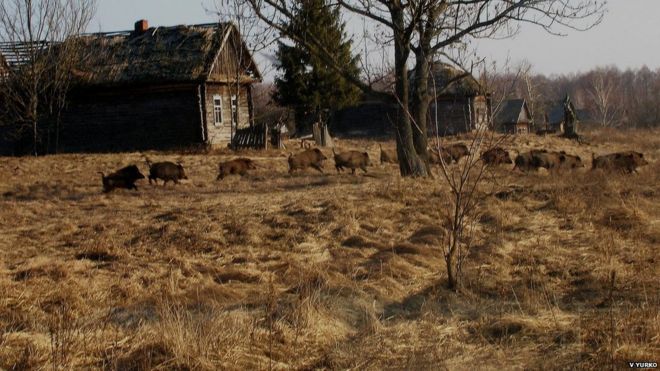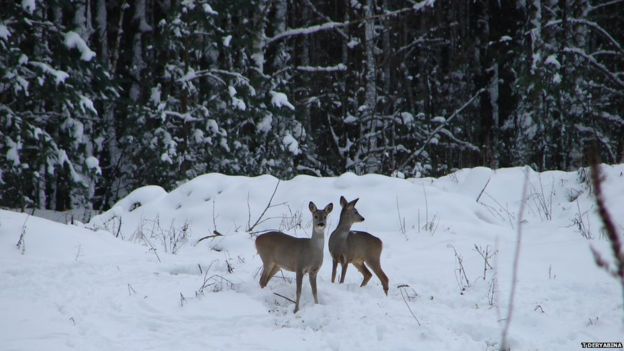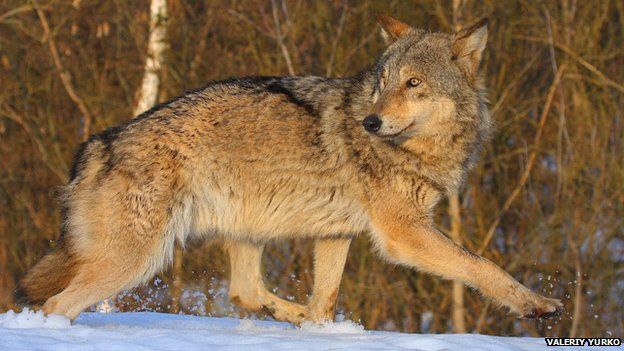Removing humans from what is now the exclusion zone around the damaged Chernobyl nuclear reactor has allowed wildlife to return, researchers say.

The team carried out a long-term survey of mammals including wild boars
They say a long-term census of mammals in the area has shown that wildlife numbers are likely to be "much higher than they were before the accident".
Professor Jim Smith of the University of Portsmouth led the study, published in the journal Current Biology.
He stressed that this "does not mean that radiation is good for wildlife".
"It's just that the effects of human habitation, including hunting, farming, and forestry, are a lot worse," Prof Smith said.
With the help of with colleagues from the Polesky State Radioecological Reserve in Belarus, the researchers examined data from aerial surveys that counted large mammals including roe deer, elk, wild boar and wolves.

Tracks in the snow allowed the researchers to estimate roe deer populations in the exclusion zone
They also carried out tracking studies in the winter - using footprints in snow to calculate the numbers of different mammal species. And measuring the levels of radioactive contamination in those tracks.
"The numbers of animals we see in Chernobyl is similar to the populations in uncontaminated nature reserves," Prof Smith said.
The number of wolves was particularly striking - up to seven times higher than in nearby nature reserves of a comparable size. Prof Smith attributed this to the lack of hunting in the exclusion zone.
A 30km exclusion zone now surrounds the infamous Chernobyl nuclear power plant. And Prof Smith says the picture from this study reveals what happens in terms of wildlife conservation "when you take humans out of the picture".

Researchers think wolves in the exclusion zone have thrived thanks to a lack of hunting
But, he said, the study did not look at the health effects of radiation on individual animals.
That is something that Prof Tim Mousseau from the University of South Carolina, has spent many years trying to unpick in his studies of wildlife - particularly bird populations - in the exclusion zone.
Prof Mousseau said the study was a "very positive move forward in conducting research concerning the potential health and environmental impacts of nuclear accidents".
"Much more research on this is desperately needed," he added.
But Prof Mousseau is also troubled by "the characterisation that Chernobyl and the surrounding area is teeming with wildlife".
"This study only applies to large mammals under hunting pressure, rather than the vast majority of animals - most birds, small mammals, and insects - that are not directly influenced by human habitation,"
From BBC News- Science/ Environment
No comments :
Post a Comment